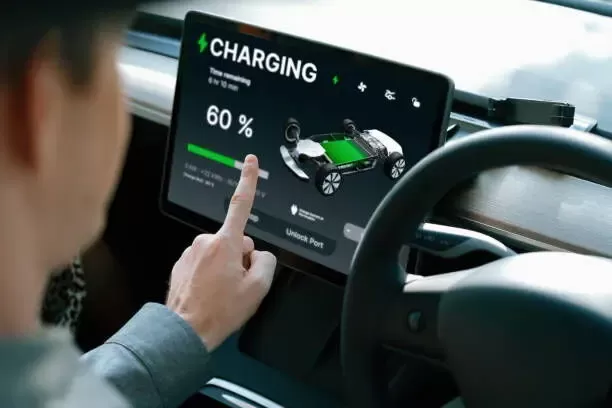Notifications

7 minutes, 39 seconds
-27 Views 0 Comments 0 Likes 0 Reviews

As a leading professional EV charger manufacturer in China, Topper Company provides dependable electric vehicle charging equipment and comprehensive charging solutions.
Electric vehicles (EVs) have come a long way. Gone are the days when drivers fretted over “range anxiety” and limited battery capacity. Today’s EVs boast advanced batteries, longer driving ranges, and faster charging capabilities. Some new models advertise over 400 miles on a single charge, and a few push close to 500 miles.
But here’s the key question: How much range do you actually need?
The U.S. Department of Transportation reports that the average American drives about 37 miles per day—well within the range of nearly every EV on the market. For example, an EV with a 250-mile range only needs to be fully charged about once every week, on average.
Of course, real-world factors—weather, driving style, terrain, battery age—affect range. Still, for most drivers, a 200 to 300-mile range comfortably covers daily commutes, errands, and even spontaneous trips.
If you frequently take long road trips, or have a rural commute with sparse charging, a bigger battery might make sense. But if your driving is mostly local, paying for extra range you rarely use adds unnecessary cost and weight.
Plugging into a standard 120V outlet is convenient but slow, adding just 3 to 5 miles of range per hour. For light daily use and overnight charging, this might suffice. But if you drive about 40 miles per day, expect 8–10 hours to recharge—fine overnight, but limiting if you need multiple outings in one day.
Level 2 chargers use a 240V outlet (like those for dryers or ovens), delivering 12 to 80 miles of range per hour depending on the charger and vehicle. Installation costs range from $500 to $1,500, but rebates often help offset this.
With Level 2 charging at home, daily “refills” are easy and reliable, eliminating most range anxiety. You don’t need a massive battery if you can top up every night.
Public Level 2 chargers and DC fast chargers (Level 3) provide convenient options on the go. DC fast chargers can add 150–250 miles in 20–30 minutes—great for road trips but less ideal for daily use due to higher costs and potential battery wear.
For many urban or suburban drivers, combining home Level 2 charging with occasional public top-ups means you rarely fully drain your battery, making extreme range less necessary.
Larger batteries experience less deep cycling daily, which can improve battery longevity. However, bigger batteries also cost more upfront, weigh more (affecting efficiency and handling), and increase replacement costs.
If you rarely tap into that extra capacity, you’re effectively carrying “dead weight” without much benefit.
Climate: Cold weather can reduce range by up to 40% due to battery inefficiency and cabin heating demands.
Terrain: Hills and towing drain battery faster.
Driving Style: Aggressive acceleration cuts range.
If you live in a cold climate or regularly tow heavy loads, having a buffer range is wise.
While electric driving is cheaper per mile than gas, overspending on a larger battery you rarely use can erode your savings. Most households find that a smaller battery combined with a reliable Level 2 charger delivers the best cost-to-convenience balance.
A larger battery offers peace of mind during emergencies—traffic jams, power outages, or detours. If you live in areas prone to such events, extra range can be insurance.
Otherwise, smart charging habits and understanding your driving needs usually serve better.
Higher-range EVs may hold value better, appealing to used buyers wanting worry-free range. However, improving battery tech means today’s 400-mile EV may look average in five years.
Maintaining battery health—avoiding frequent full charges or deep discharges—extends lifespan and supports resale, regardless of battery size.
Track your daily mileage using your car’s odometer or an app over several weeks.
Add a 20–30% buffer for errands, bad weather, or emergencies.
Consider your charging setup—do you have Level 2 home charging?
Evaluate your travel habits—long trips, second vehicles, etc.
Calculate your realistic range needs.
For many drivers, 200–300 miles hits the sweet spot—ample daily range without paying for unused capacity.
Automakers will keep pushing battery capacity higher—and that’s good for everyone. But your ideal range depends on how you drive, where you charge, and what peace of mind means to you.
More range is reassuring, but smart charging, planning, and realistic habits often deliver the same confidence at a lower cost.
Before your next EV purchase, ask yourself:
Do I really need an extra 200 miles of battery I’ll rarely use? Or could that money be better spent on features that enhance my daily drive?
Match your EV’s range to your actual needs—and you’ll get the best value for your miles. That’s the practical—and exciting—future of electric driving.Know more about Google SEO Directory
China EV Chargers EV Charger Manufacturer EV Charging Solutions

